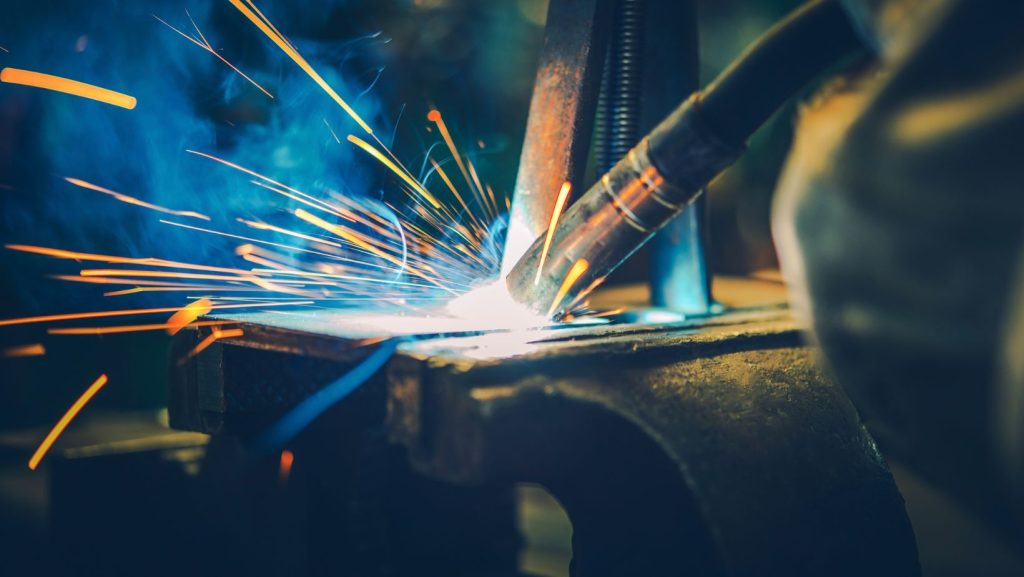
Welding is a sophisticated craft that requires precision and expertise, involving the fusion of materials, predominantly metals, through the application of heat. The choice of welding technique is influenced by the metals to be joined and the conditions under which welding will take place. Key techniques include:
- MIG Welding (GMAW – Gas Metal Arc Welding): Utilizes a consumable wire electrode and inert gas, making it versatile for a variety of metals.
- TIG Welding (GTAW – Gas Tungsten Arc Welding): Employs a non-consumable tungsten electrode, renowned for producing high-quality, clean welds.
- Stick Welding (SMAW – Shielded Metal Arc Welding): Known for its simplicity and effectiveness, especially in outdoor or windy conditions.
- Flux Welding (FCAW – Cored Arc Welding): Offers the benefits of MIG Welding with added protection from atmospheric contamination.
- Energy Beam Welding (EBW): Offers concentrated energy for deep welds and high precision.
- Atomic Hydrogen Welding (AHW): An older technique that uses hydrogen as a shielding atmosphere.
- Oxy-Acetylene Welding: A traditional method involving a flame fueled by a mixture of oxygen and acetylene.
- Plasma Arc Welding: Similar to TIG Welding but with the capability to cut through thick metal sections with a concentrated plasma jet.
Selecting the appropriate welding technique is essential for achieving the desired outcome and ensuring the integrity of the joint. Each method has its unique advantages and considerations, making it integral for welders to have a comprehensive understanding of their applications.
Plus, selecting a reputable welding manufacturer like Lincoln can also significantly impact the quality of your welding results. Therefore, it’s essential to have an understanding of the basics of welding, which we will explore in more detail below.
The Role of a Professional Welder
At the core of their craft, welders are skilled technicians dedicated to the art and science of fusing materials, often metals, to create both functional and structural components. Projects can range from the precision required in welding a custom sculpture to the robust needs of repairing critical infrastructure, such as buildings or transportation networks.
Their expertise extends into various sectors, including the fabrication and mending of pipelines, ornamental frameworks, marine vessels, including ships and submarines, as well as in sectors like construction, petrochemical industries, automotive, and many others.
Welders begin their tasks with thorough preparation, meticulously analysing blueprints and engineering schematics to ensure accuracy and safety. This initial phase is crucial as it informs the selection of appropriate equipment and welding techniques, which vary greatly depending on the specific requirements of each unique project.
Embarking on the Welder’s Journey: Pathways to Mastery
Learning to weld is an endeavour that requires dedication, attention to detail, and a commitment to safety due to the technical and hands-on nature of the field. Aspiring welders have various avenues to acquire the necessary skills. Traditional methods include mentorship from experienced welders, comprehensive coursework at vocational schools, or targeted workshops at art institutes.
In the digital age, online resources and video tutorials have also become valuable for providing foundational knowledge and step-by-step guidance. Before engaging in actual welding, it is crucial to grasp the complexities of the machinery and the intricate dance with high temperatures and reactive materials.
Comprehensive preparation is the key to mastering welding techniques safely and effectively. Whether you choose a formal educational setting or the guidance of a seasoned mentor, embark on your welding journey with respect, caution, and an eagerness to learn.
Choosing Your Welding Path
Prior to igniting the torch, it’s vital to lay the groundwork by researching the diverse welding types. Evaluate which method resonates with your interests—be it as a recreational pursuit, an artistic expression, or a professional ambition. Clarify your objectives from the outset: are you seeking to appreciate the art of welding, or are you aiming to carve a niche for yourself in a rewarding and high-demand industry?
Setting Your Welding Aspirations
Welding opens a world of creative and practical possibilities for beginners. It’s a splendid way to craft unique home projects like artistic garden structures or innovative metal sculptures. As your proficiency and technique evolve, these skills lay the foundation for a prosperous career. Embrace the journey, and let your aspirations be your guide.
Education and Certification
Once your goals are pinpointed, explore the educational paths that best support your welding ambitions. Numerous certifications can advance your expertise and credibility in various welding careers.

Look into programs offered by local high schools, vocational institutes, and community colleges—each providing a stepping stone to mastery and success in the field of welding.
The Four Kinds of Welding
MIG Welding: A Starter’s Best Friend
MIG Welding, or Metal Inert Gas Welding, often serves as the entry point for novices eager to gain proficiency in the craft. Its operation is akin to using a hot glue gun—effortless enough for beginners to quickly create solid joins across varied projects.
ARC Welding: Honing the Traditional Craft
ARC Welding, representing a classical era of welding, remains the sole technique applicable for underwater tasks. Although ARC Welding presents greater complexity compared to MIG, learners can achieve mastery through dedicated practice. Instructors guide beginners through the essential steps of generating the arc with precision tools, leading to the adept use of both power and manual techniques necessary for high-quality welding work.
TIG Welding: Precision for Sensitive Materials
When working with materials beyond the scope of steel, TIG Welding, or Tungsten Inert Gas Welding, is the preferred method.

This technique demands a coordinated ballet of both hands and sometimes a foot pedal, not unlike operating a sewing machine. TIG leverages a tungsten electrode in an inert gas environment to achieve delicate, precise welds. Beginners start with basic exercises, progressively taking on more complex tasks to develop a firm understanding of the fundamentals of metallurgy, preparation, and technique.
Oxy-Acetylene Welding: The Versatile Classic
Oxy-Acetylene Welding’s linage dates back to ancient times, proving its lasting efficacy. This well-regarded technique excels in versatility, allowing for welding, brazing, and cutting of materials like iron or steel. Practical applications extend to metal cleaning, such as removing rust or scale and dislodging stubborn nuts and bolts.
Choosing the right technique is crucial, and these educational insights form the foundational pillars upon which aspiring welders can build a skilled and varied practice.












